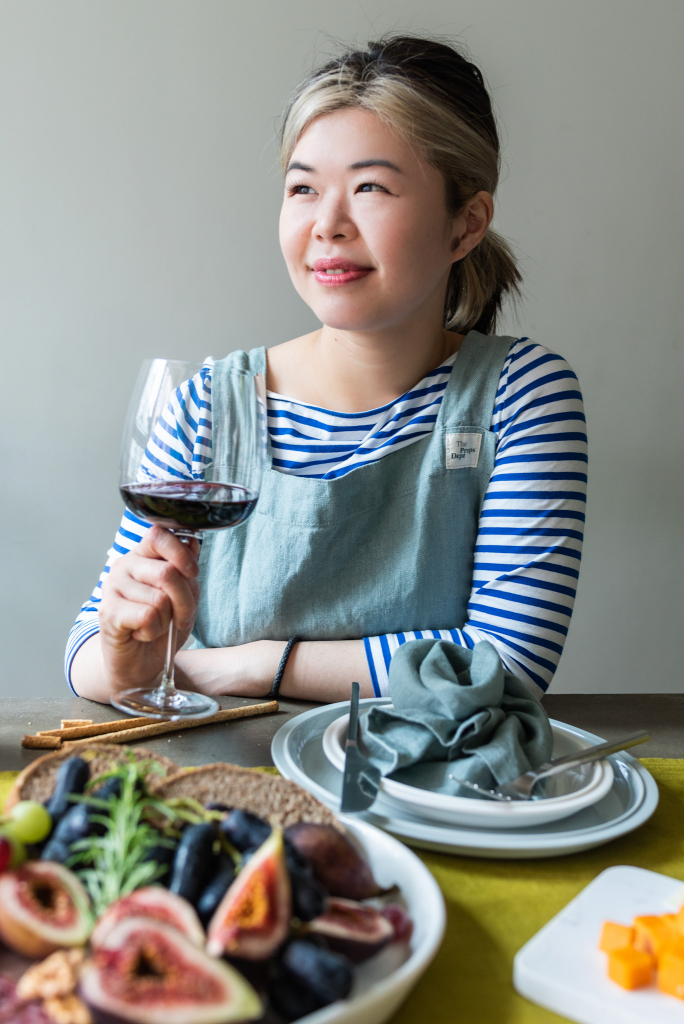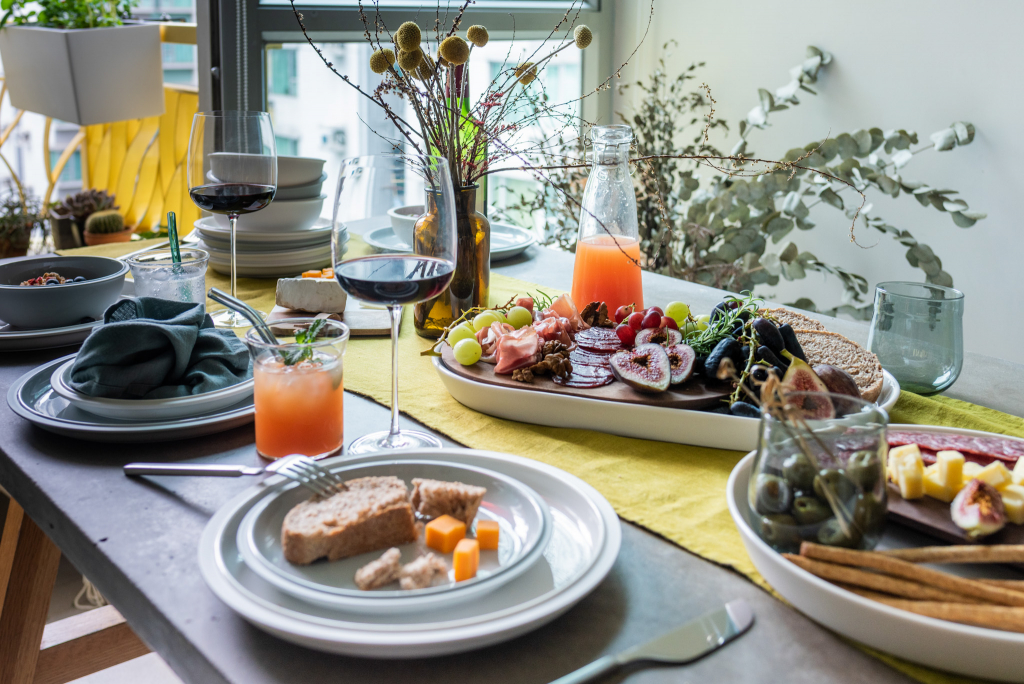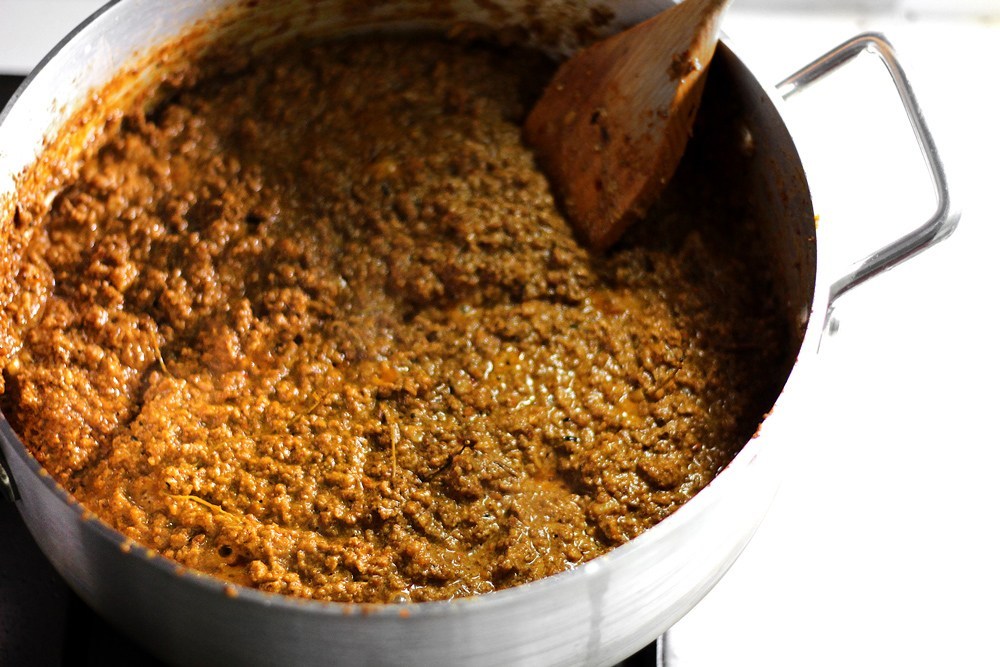Power Of Scent: BOMSHBEE Pairs Inspiring Memories With Reusable Glassware In Collaboration With East Lane Candles
Growing up in Madison, New Jersey, a picturesque town about 25 miles from Manhattan, Emily Ficke remembers a childhood where the scent of fresh herbs was always in the air. “Our mom is an avid gardener, and I was always tasked with picking the herbs for dinner,” she says. “The smell of basil and rosemary – it just brings me right back to memories of grilling in the summertime.”
Inspired by meaningful experiences, Emily and her brother Matt launched their own candle company, East Lane Candles, at the end of 2020. Named after the street they grew up on, the artisanal candle brand is a collection of coconut-soy wax candles with scents inspired by the siblings’ favorite American destinations.

Their first batch of hand-poured candles showcases four locations – Aspen, Monterey, Manchester, and Nantucket – places that the brother-and-sister duo had visited many times and fell in love with. “We felt each destination was a place where we could escape and really take in the moment,” says Emily.
As it happens, the idea for East Lane Candles came about on a road trip where the duo drove from Aspen, Colorado in the Rocky Mountains to seaside Monterey, California on the scenic west coast, with several stops along the way.
“We were seeing the country and hiking in national parks, and that’s where we had the idea for what eventually became East Lane,” recalls Emily. “We chose to use locations as the theme for our candles, because we wanted to create something that was relatable, and motivated by real experiences.”
The Nantucket candle – inspired by the upmarket island off Cape Cod’s south coast, and the town that launched a thousand dirty limericks – is a blend of fruity and floral aromas, with balmy, graceful notes of hydrangea, lily, peony and pear. Meanwhile Aspen, evokes the great outdoors and untamed wilderness, with heady peppermint, pine and eucalyptus.

“We look at local ingredients and the experiences you might have while visiting. From there, we source various fragrance oils and test possible combinations,” says Emily, who hand pours each candle from her home studio in Pennsylvania.
Research informs much of their experimentation, and Matt credits the work of Luca Turin – a scientist and author who specializes in olfaction, perfumery and the human experience of smell – as a particular inspiration for him.
“There’s a scientific link between memory and smell,” says Matt. “The scents we encounter are effectively stored as specific emotions that are personal to the individual. It’s a complex subject, but we’re fascinated by this relationship.”
An incredible 75 percent of the emotions we generate each day are due to scent, says Matt. And humans are 100 times more likely to remember something they smell over something they see, hear, or touch. It’s a potent sense that can stimulate more positivity, relaxation and enjoyment in our daily lives – something that everyone could use more of these days.

“We aim to inspire memories! A lot of people have been unable to travel during the last year, and we hope our candles allow them to ‘revisit’ places they previously enjoyed,” says Emily.
Passionate travellers and avid explorers of the country’s natural wonders, Emily and Matt were adamant about operating a sustainable business from Day 1. The company uses biodegradable packaging, sells products in bundles to reduce shipping emissions, and sources everything locally, from eco-friendly cotton wicks to clean-burning coconut-soy wax.
They also sought out a modern, minimalist design for the candle’s glassware, so it could easily be repurposed and enjoyed as a rocks glass – ideal for a happy hour at home. That’s where BOMSHBEE comes in. East Lane’s second batch of candles – Yosemite, Zion and Haleakala – take inspiration from America’s national parks, and the siblings chose BOMSHBEE’s Ring DOF glassware as the vessel for the new collection.
“We love the BOMSHBEE glassware! First, the rings on top and bottom really isolate the flame, so it burns in the middle. The look is clean and modern, and the glass is the perfect size for your favorite cocktail,” says Emily.
Speaking of cocktails, there’s nothing better to end the day like a margarita – whether you’ve been hiking the high ridges of Zion National Park, or just want to savor a well-deserved drink from your porch on a summery night.
Try your hand at making this mezcal version, courtesy of East Lane Candles:
The Drink: East Lane Candle’s Mezcal Margarita
Servings: 2

Ingredients:
- 3oz mezcal
- 2oz orange liqueur
- 1.5oz freshly squeezed lime juice (roughly 2 limes)
- 2 teaspoons agave nectar
- Salt & lime zest for glass rim (optional)
Directions:
- Are you a fan of salt on the rim? Take it up a notch by adding lime zest. Grab a shallow dish, fill it with salt and lime zest, and mix together. Run a lime wedge along the beautiful bold rim of your BOMSHBEE glass, then dip into the mixture.
- In a cocktail shaker, combine mezcal, orange liqueur, lime juice and agave nectar. Pro tip, margaritas are best shaken not stirred. Shake away!
- Do a taste test. If you would like more sweetness, add another teaspoon of agave nectar.
- Fill your glass with ice, pour, serve and enjoy!










































































